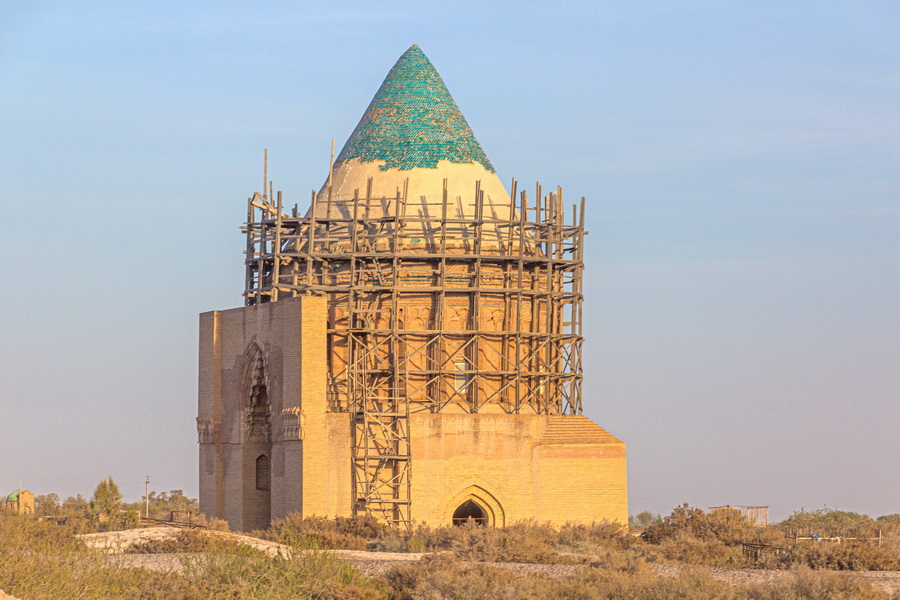Mausoleum of Khorezmshah Tekesh

The mausoleum of Khorezm Shah Tekesh was built in 1200, the year of Tekesh's death. His full name was Ala ad-Duniya wa-d-Din Abu-l-Muzaffar Tekesh ibn Il Arslan. As the eldest son of Il Arslan and ruler of Kunya-Urgench, Tekesh left a lasting legacy. His mausoleum is one of the few surviving monuments from the pre-Mongol period.
The Tekesh Mausoleum stands 30 metres tall, crowned by a distinctive 24-compartment drum and a conical dome covered in sky-blue tiles. Nearby are several other important landmarks: the Kutlug-Timur Minaret, the Tyurabek-Khanim Mausoleum and Kyrk-Molla Hill.
Sultan Tekesh is remembered as both a formidable leader and a ruthless ruler, with a reputation for securing his path to power through bloodshed. In 1172, with the help of his former Karakitai enemies, Tekesh deposed his younger half-brother, Jalal ad-Din Sultan Shah, and claimed the throne of Khorezm. In a further bid for control, Tekesh ordered the execution of Terken-Khatun, his stepmother and Sultan Shah's mother. Sultan Shah escaped and spent the next two decades fighting for the throne.
Despite his harsh rule, Tekesh was also a patron of scholars, poets, arts and crafts. He established a vast library and funded the construction of houses, mosques and Koranic schools. Under his leadership, Khorezm expanded from the Aral Sea in the north to the Persian Gulf in the south, and from the Pamir Mountains in the east to the Iranian plateau in the west. In 1193, after the death of Sultan Shah, Tekesh annexed Merv and Serakhs, consolidating Khorezm as the most powerful state in Central Asia.
The Mausoleum of Tekesh is often compared to the Mausoleum of Sultan Sanjar in Merv. Both structures were symbolic monuments, towering over other buildings and serving as emblems of their respective cities.
